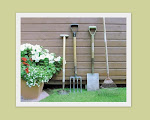
Early spring is the perfect time to plant your peas, spinach, and other salad greens. These vegetables can thrive in cool temperatures and withstand light frosts that are common this time of year. Follow these tips for planting and caring for early spring vegetables.
-Sow seeds into cell packs and grow seedlings.
- Place seedlings in a cold frame to harden off. If you don’t have a cold frame taking the mature transplants them outside during the day and bring them in at night will be just fine.
- Bed preparation: Add compost layer, use a tiller or shovel to turn your soil to lift, fluff, and aerate the soil.
- Transplanting seedlings: Check seed packets for proper spacing and depth.
- Direct sowing techniques: Use a guideline and hand-plant peas.
- Watering: Keep plants and soil moist.
- Row covering is important to help stave off insect and frost damage.
-Sow seeds into cell packs and grow seedlings.
- Place seedlings in a cold frame to harden off. If you don’t have a cold frame taking the mature transplants them outside during the day and bring them in at night will be just fine.
- Bed preparation: Add compost layer, use a tiller or shovel to turn your soil to lift, fluff, and aerate the soil.
- Transplanting seedlings: Check seed packets for proper spacing and depth.
- Direct sowing techniques: Use a guideline and hand-plant peas.
- Watering: Keep plants and soil moist.
- Row covering is important to help stave off insect and frost damage.
Here are some varieties that do well in Utah.
Peas:
Shell type: Patriot, Lincoln, Early Frosty, Novella
Edible pod: Little Sweetie, Oregon Sugar Pod.
Snap type: Sugar Snap, Sugar Daddy Stringless.
Lettuce:
Leaf type: Red Sails (AAS), Green Ice, Oakleaf,
Butterhead type: Cindy, Buttercrunch, Prizehead
Heading type: Ithaca, Salinas
Spinach:
Skookum Hybrid, Melody Hybrid, Rhubarb, Fordhook Giant, Locullus
Swiss Chard:
Rhubarb, Fordhook Giant, Locullus
Happy planting and enjoy eating your homegrown spring vegetables.
Peas:
Shell type: Patriot, Lincoln, Early Frosty, Novella
Edible pod: Little Sweetie, Oregon Sugar Pod.
Snap type: Sugar Snap, Sugar Daddy Stringless.
Lettuce:
Leaf type: Red Sails (AAS), Green Ice, Oakleaf,
Butterhead type: Cindy, Buttercrunch, Prizehead
Heading type: Ithaca, Salinas
Spinach:
Skookum Hybrid, Melody Hybrid, Rhubarb, Fordhook Giant, Locullus
Swiss Chard:
Rhubarb, Fordhook Giant, Locullus
Happy planting and enjoy eating your homegrown spring vegetables.





